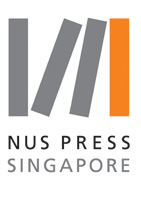9789971698188
Distributed for National University of Singapore Press
Brunei
From the Age of Commerce to the 21st Century
Now an energy-rich sultanate, for centuries a important trading port in the South China Sea, Brunei has taken a different direction than its Persian Gulf peers. Immigration is restricted, and Brunei’s hydrocarbon wealth is invested conservatively, mostly outside the country.
Today home to some 393,000 inhabitants and comprising 5,765 square kilometers in area, Brunei first appears in the historical record at the end of the 10th century. After the Spanish attack of 1578, Brunei struggled to regain and expand its control on coastal West Borneo and to remain within the trading networks of the South China Sea. It later fell under British sway, and a residency was established in 1906, but it took the discovery of oil in Seria in 1929 before the colonial power began to establish the bases of a modern state.
Governed by an absolute monarchy, Bruneians today nonetheless enjoy a high level of social protection and rule of law. Ranking second (after Singapore) in Southeast Asia in terms of standards of living, the sultanate is implementing an Islamic penal code for the first time of its history. Focusing on Brunei’s political economy, history and geography, this book aims to understand the forces behind Brunei’s to-and-fro of tradition and modernisation.
Today home to some 393,000 inhabitants and comprising 5,765 square kilometers in area, Brunei first appears in the historical record at the end of the 10th century. After the Spanish attack of 1578, Brunei struggled to regain and expand its control on coastal West Borneo and to remain within the trading networks of the South China Sea. It later fell under British sway, and a residency was established in 1906, but it took the discovery of oil in Seria in 1929 before the colonial power began to establish the bases of a modern state.
Governed by an absolute monarchy, Bruneians today nonetheless enjoy a high level of social protection and rule of law. Ranking second (after Singapore) in Southeast Asia in terms of standards of living, the sultanate is implementing an Islamic penal code for the first time of its history. Focusing on Brunei’s political economy, history and geography, this book aims to understand the forces behind Brunei’s to-and-fro of tradition and modernisation.
368 pages | 6 x 9 | © 2015
Asian Studies: Southeast Asia and Australia
Economics and Business: Economics--Agriculture and Natural Resources, Economics--Development, Growth, Planning
History: Asian History, British and Irish History
Table of Contents
List of Graphs
List of Maps
List of Tables
List of Figures
Acknowledgements
Foreword
I. Prologue: Brunei versus Borneo
1. Apparently Unfavourable Geography
2. The Best Port in West Borneo
3. A Relatively Strategic site
II. From Thalassocracy to Rentier State
1. Introduction: Sources and Methodology
A. Premises and Emergence of the Bruneian Thalassocracy
B. New Commercial Routes and Internal Rivalries (1600–1905)
C. From Residency to Independence (1906–84)
III. Independence and After, 1984–2014
A. Political Independence
B. From Hydrocarbon Rent to Financial Rent
C. Evaluating the Bruneian Model
IV. Adat Istiadat and Societal Management
1. Seeking the Brunei Paradigm
A. Orag Melayu, Orag Brunei?
B. Adat Istiadat
C. Melayu Islam Beraja
Conclusion: Durable Consensus?
Appendices
1. Weights, Measures and Currency
2. Lexicon
3. Thematic Bibliography
Index
List of Maps
List of Tables
List of Figures
Acknowledgements
Foreword
I. Prologue: Brunei versus Borneo
1. Apparently Unfavourable Geography
2. The Best Port in West Borneo
3. A Relatively Strategic site
II. From Thalassocracy to Rentier State
1. Introduction: Sources and Methodology
A. Premises and Emergence of the Bruneian Thalassocracy
B. New Commercial Routes and Internal Rivalries (1600–1905)
C. From Residency to Independence (1906–84)
III. Independence and After, 1984–2014
A. Political Independence
B. From Hydrocarbon Rent to Financial Rent
C. Evaluating the Bruneian Model
IV. Adat Istiadat and Societal Management
1. Seeking the Brunei Paradigm
A. Orag Melayu, Orag Brunei?
B. Adat Istiadat
C. Melayu Islam Beraja
Conclusion: Durable Consensus?
Appendices
1. Weights, Measures and Currency
2. Lexicon
3. Thematic Bibliography
Index

